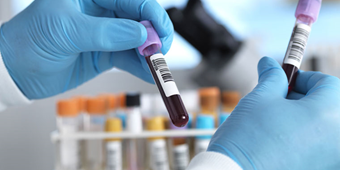- Cardiology And Vascular Health
- Health Topics
- Heart And Vascular Disease Prevention
- Stroke And Other Vascular Diseases
- Vascular Health
Four Easy Travel Tricks To Prevent Blood Clots

Find Your Perfect Match
Answer a few questions and we'll provide you with a list of primary care providers that best fit your needs.
That long plane ride may be cramped, stressful, and boring—but it can also be deadly for women who develop deep vein thrombosis (DVT). Even perfectly healthy travelers, after being in a sedentary position for too long, can develop a blood clot or thrombus in a leg known as a DVT
Long plane rides aren’t the only culprits. Train and bus rides can be just as bad, as are car rides, especially when we’re trying to book 200 more miles before the end of the day!
Causes Of DVT
The deep veins of the legs, located in the muscles, help carry blood from the legs to the heart. When leg muscles contract and relax, blood is squeezed through the veins back to the heart.
But while you’re watching George Clooney in the airline movie or engrossed in an audio book on the car ride, your leg muscles aren’t contracting. Blood, moving too slowly or not at all, can pool in the veins. This makes a clot more likely to form.
A report from the World Health Organization says the risk of DVT doubles after a flight of four hours or similar car, train, or bus ride. Obesity, extremes of height, oral contraceptive use, and prothrombotic disorders all increase the risk, which is one in 6,000 in healthy people over a four-hour flight.
According to the American Heart Association, women with vascular disease or a history of heart failure have even more chance of clot risk. If that’s you, consider talking to your doctor about your travel plans to see what she recommends, such as compression stockings or additional oxygen.
Dr. Sandeep Gupta discusses what can increase the risk of blood clots during travel.
Click play to watch the video or read video transcript.
Preventing DVTs
Women can travel smart by using these tips for good vascular health while traveling, to help prevent a DVT:
- Hello, Cracker Barrel! When traveling by car, make frequent stops to get out and move around.
- Walking the aisle. On long rides on a plane, train or bus, get up and move around when you get the opportunity.
- Hidden exercises. If you can’t get up, wiggle your toes and tighten your calves to keep your blood moving.
- Book the aisle seat. According to the Centers for Disease Control and Prevention, aisle seats have a protective effect, compared with window or middle seats, probably because passengers are freer to move around.
Find Your Perfect Match
Answer a few questions and we'll provide you with a list of primary care providers that best fit your needs.
Source: American Heart Association; National Center for Biotechnical Information; Centers for Disease Control and Prevention






